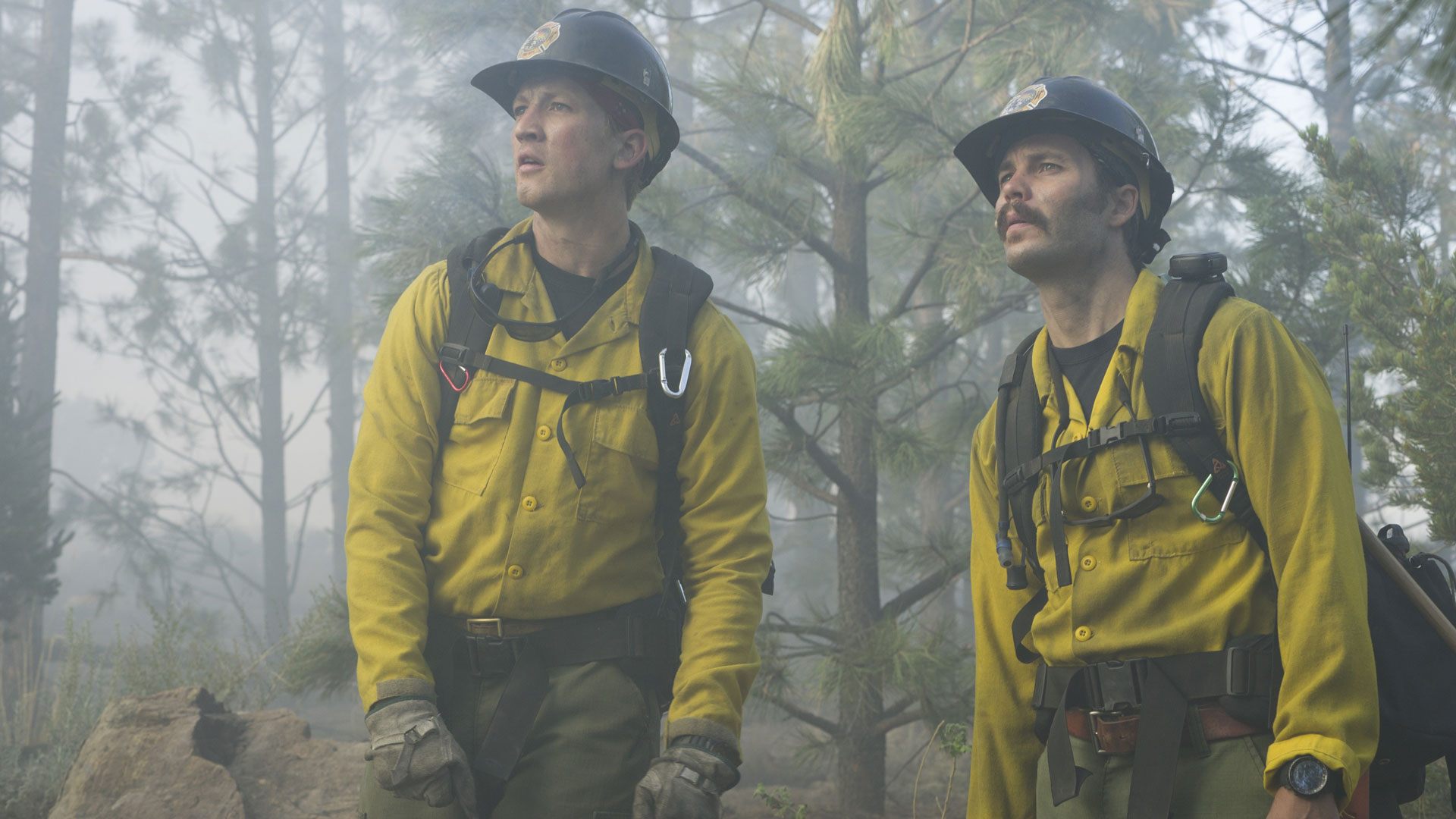Only the Brave, the Joseph Kosinski-directed feature film about the elite firefighting squad known as the Granite Mountain Hotshots, has something fundamental in common with Deadpool, Gone Girl, and The Florida Project — it’s one of the latest in that small but growing number of feature films edited in Adobe Premiere Pro.
That’s still a new way of working for feature filmmakers, but it’s becoming more feasible all the time. First Assistant Editor Jamie Clarke said new features in Premiere Pro, fast storage from OpenDrives, and media management from FotoKem’s NextLab system ensured a smooth workflow.

“Supe” Eric Marsh (Josh Brolin) berates Brendan McDonough (Miles Teller) during training in Prescott National Forest in Only the Brave
Richard Foreman/Columbia Pictures
At the beginning of the project, Clarke met with editor Billy Fox about the job before before he realized the show was going to be edited in Premiere. “Billy loves pushing the envelope of technology, and I love that too, so we were on the same page in that regard,” he recalls. “But I was a little nervous when he said, ‘We’re doing it in Premiere.’ I had never done a feature film in Premiere. But I’m up for experimenting.”
It wasn’t going to be an lightweight job. The shoot took place in New Mexico, where DP Claudio Miranda’s crew was capturing 4K (4096×2160) footage with the Sony F65. Deliverables included not just a 4K DCP but an Imax version as well.
FotoKem’s NextLab Brings the Camera Negative into the Cutting Room
The film shot in New Mexico, but editorial was set up at Margarita Mix, a FotoKem company, in Santa Monica, CA. While principal photography took place, the NextLab system was set up near location, where the F65 footage was ingested, dailies synced, and the on-set color grade applied. All of the footage was transcoded to 2K ProRes 422 QuickTime (not MXF) files that were uploaded to Santa Monica overnight, with Premiere-ready metadata and projects. The camera original media and database were synced to another NextLab system at Margarita Mix so that editorial had everything available first thing in the morning.
“The fact that once we got into post we had all the camera negative literally in the same room with us was a huge asset,” Clarke says. “If Joe [Kosinski] wanted to see if a shot was a little soft or had any other problems, we could export an EDL, transcode it on the fly out to 4K on NextLab, and then get it back in the system to check things out.”
VFX editor Jon Carr’s workflow also benefited from NextLab, which streamlined the process of generating VFX pulls for ILM. “Typically, if you’re doing VFX pulls, you create an EDL with all your VFX shots and you send it to your dailies vendor, whoever’s holding your negative, and they’ll pull the shots, upload that back to you, and then you upload it to the vendors. With this system, it was just an EDL straight into the system, let it transcode for 15 minutes or however long, depending on the clip length, and then upload it straight to the vendor right away.”

“Supe” Eric Marsh (Josh Brolin) leads the Granite Mountain Hotshots up the trail at Yarnell Hills–including, generally in this order: Travis Carter (Scott Foxx), Dustin Deford (Ryan Busch), Garret Zuppiger (Brandon Bunch), Andrew Ashcraft (Alex Russell), Wade Parker (Ben Hardy), Scott Norris (producer Thad Luckinbill), Anthony Rose (Jake Picking), Travis Turbyfill (Geoff Stults), Chris MacKenzie (Taylor Kitsch), Brendan McDonough (Miles Teller), Joe Thurston (Matthew Van Wettering), Kevin Woyjeck (Michael McNulty), Grant McKee (Sam Quinn), Billy Warneke (Ryan Jason Cook), John Percin, Jr. (Nicholas Jenks), Sean Misner (Kenny Miller), Robert Caldwell (Dylan Kenin), Clayton Whitted (Scott Haze), Jesse Steed (James Badge Dale).
Richard Foreman/Columbia Pictures
Premiere Pro Proves Its Mettle
Media was stored on an OpenDrives NAS system with fast caching that made short work of opening and closing Premiere Pro projects. The production used the Project Locking feature in Premiere Pro to keep different members of the editorial department from interrupting each other’s work or corrupting project files.
Color-grading was performed using the Lumetri tools built into Premiere Pro, and DCPs were generated through Adobe Media Encoder using third-party encryption, saving the production a lot of time and money around preview screenings.
Props to Customer Support
Clark credits Adobe’s “Hollywood team” with going the extra mile to make sure feature film clients are getting what they need out of the software. “They’re dedicated to making Premiere the best editing system in the business,” he says. “Adobe is talking to everyone, wanting to find out what we like and what we don’t like, wanting to make things better.”
And he appreciated FotoKem’s dedication as well, noting that Melissa Lichtle from FotoKem spent a lot of time on site, making sure things were progressing well throughout the post process. “FotoKem is very open to, ‘Oh, do you want to try something new to see how it works?'” he says. “And this was the first show I actually used NextLab on, and I absolutely loved it. It’s one of the greatest tools I’ve ever had on any feature film.”
Crafts: Editing
Sections: Technology
Topics: Project/Case study adobe Fotokem jamie clarke nextlab opendrives premiere pro
Did you enjoy this article? Sign up to receive the StudioDaily Fix eletter containing the latest stories, including news, videos, interviews, reviews and more.










